A wavelet-based neural model to optimize and read out a temporal population code
- PMID: 22563314
- PMCID: PMC3342589
- DOI: 10.3389/fncom.2012.00021
A wavelet-based neural model to optimize and read out a temporal population code
Abstract
It has been proposed that the dense excitatory local connectivity of the neo-cortex plays a specific role in the transformation of spatial stimulus information into a temporal representation or a temporal population code (TPC). TPC provides for a rapid, robust, and high-capacity encoding of salient stimulus features with respect to position, rotation, and distortion. The TPC hypothesis gives a functional interpretation to a core feature of the cortical anatomy: its dense local and sparse long-range connectivity. Thus far, the question of how the TPC encoding can be decoded in downstream areas has not been addressed. Here, we present a neural circuit that decodes the spectral properties of the TPC using a biologically plausible implementation of a Haar transform. We perform a systematic investigation of our model in a recognition task using a standardized stimulus set. We consider alternative implementations using either regular spiking or bursting neurons and a range of spectral bands. Our results show that our wavelet readout circuit provides for the robust decoding of the TPC and further compresses the code without loosing speed or quality of decoding. We show that in the TPC signal the relevant stimulus information is present in the frequencies around 100 Hz. Our results show that the TPC is constructed around a small number of coding components that can be well decoded by wavelet coefficients in a neuronal implementation. The solution to the TPC decoding problem proposed here suggests that cortical processing streams might well consist of sequential operations where spatio-temporal transformations at lower levels forming a compact stimulus encoding using TPC that are subsequently decoded back to a spatial representation using wavelet transforms. In addition, the results presented here show that different properties of the stimulus might be transmitted to further processing stages using different frequency components that are captured by appropriately tuned wavelet-based decoders.
Keywords: Haar wavelets; pattern recognition; spike neural network; temporal coding; visual system; wavelet transform.
Figures


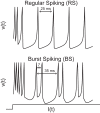
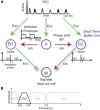



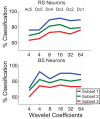
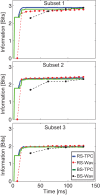
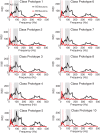

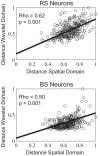
Similar articles
-
Decoding a temporal population code.Neural Comput. 2004 Oct;16(10):2079-100. doi: 10.1162/0899766041732459. Neural Comput. 2004. PMID: 15333208
-
Decoding and encoding of visual patterns using magnetoencephalographic data represented in manifolds.Neuroimage. 2014 Nov 15;102 Pt 2:435-50. doi: 10.1016/j.neuroimage.2014.07.046. Epub 2014 Jul 27. Neuroimage. 2014. PMID: 25072391
-
Recording human electrocorticographic (ECoG) signals for neuroscientific research and real-time functional cortical mapping.J Vis Exp. 2012 Jun 26;(64):3993. doi: 10.3791/3993. J Vis Exp. 2012. PMID: 22782131 Free PMC article.
-
The neuronal encoding of information in the brain.Prog Neurobiol. 2011 Nov;95(3):448-90. doi: 10.1016/j.pneurobio.2011.08.002. Epub 2011 Sep 2. Prog Neurobiol. 2011. PMID: 21907758 Review.
-
Phase correlation among rhythms present at different frequencies: spectral methods, application to microelectrode recordings from visual cortex and functional implications.Int J Psychophysiol. 1997 Jun;26(1-3):171-89. doi: 10.1016/s0167-8760(97)00763-0. Int J Psychophysiol. 1997. PMID: 9203002 Review.
Cited by
-
Neural signature of the perceptual decision in the neural population responses of the inferior temporal cortex.Sci Rep. 2022 May 23;12(1):8628. doi: 10.1038/s41598-022-12236-y. Sci Rep. 2022. PMID: 35606516 Free PMC article.
-
Synthetic consciousness: the distributed adaptive control perspective.Philos Trans R Soc Lond B Biol Sci. 2016 Aug 19;371(1701):20150448. doi: 10.1098/rstb.2015.0448. Philos Trans R Soc Lond B Biol Sci. 2016. PMID: 27431526 Free PMC article.
References
-
- Buzsáki G. (2006). Rhythms of the Brain. (New York, NY: Oxford University Press; ).
LinkOut - more resources
Full Text Sources

